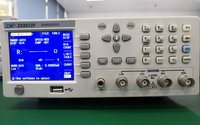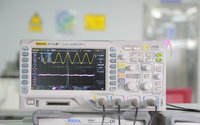Tesla FSD landing in China: the "danger" and "opportunity" of the electronic components industry
Date:2025-05-16 13:32:15 Views:1787
Recently, Tesla officially launched its FSD (fully autonomous driving) function in batches in the Chinese market, marking the official entry of its intelligent driving technology into the Chinese market. This measure not only brings a new intelligent driving experience to domestic consumers, but also has a profound impact on China's intelligent driving industry chain, especially the electronic component supply chain.

1、 Core and Advantages of FSD Technology
The core technology of Tesla FSD is based on its unique pure visual solution, which achieves environmental perception and decision control through in car cameras and powerful neural network algorithms. The advantage of this approach is that:
Cost control:The pure visual solution does not rely on high cost hardware such as LiDAR, and the hardware cost is only one fourth of the mainstream solutions in China.
Data driven:Tesla trains its algorithms with massive amounts of data, forming a powerful data loop that enables its system to quickly adapt to complex road conditions.
Technological maturity:After years of iterative optimization, Tesla's FSD system has accumulated over 1 billion miles of training data worldwide.
2、 FSD's entry into China poses challenges to the electronic component supply chain
Data Security and Compliance:The operation of FSD system is highly dependent on real-time collected road data. However, the country has strict laws and regulations on data security and privacy protection, requiring that all autonomous driving data related to vehicle location, environmental images, and owner information must be stored within the country, and transmission outside the country must pass security assessments. Therefore, Tesla needs to ensure compliance in data storage and transmission, which puts higher demands on domestic data centers and cloud service providers.
Technical adaptation and localization:The complex transportation environment and road conditions in China place extremely high demands on autonomous driving technology. The Tesla FSD system needs to be deeply adapted to China's traffic regulations, road conditions, driving habits, etc. This requires electronic component suppliers not only to provide high-performance and highly reliable products, but also to have strong localized technical support and service capabilities. At the same time, the introduction of Tesla's FSD system will also promote technological upgrading and innovation in China's electronic components industry, placing higher demands on the technical strength of suppliers.
Supply chain integration and optimization:Tesla's supply chain system is mature and closed, and its core components such as FSD chips and camera modules are mostly self-developed or deeply customized. If domestic suppliers want to enter Tesla's supply chain, they need to meet Tesla's high standards in technology, quality, and production capacity.
3、 Opportunities for domestic electronic component companies
Technological upgrade and cooperation:Tesla's technology roadmap and data processing methods provide a sample for domestic enterprises to learn and reference. For example, domestic enterprises can refer to Tesla's pure visual solution to optimize their own technical architecture.
Market demand growth:With the popularization of intelligent driving technology, the demand for high-precision cameras, sensors, and chips in China will continue to grow. Tesla's entry into China will further promote the development of related industrial chains.
Collaborative development of industrial chain:The promotion of Tesla FSD will drive the coordinated development of upstream and downstream industries, from upstream sensor and chip suppliers to downstream service providers such as map updates and data analysis, all of which will usher in new business growth points.
Overall, the entry of Tesla FSD into China is an important milestone in the development of China's autonomous driving market and a key opportunity for the localization breakthrough of the domestic electronic component supply chain. Despite facing multiple challenges in technology, industry, and policy, with the continuous innovation of domestic enterprises, the strengthening of industry collaboration, and the deepening of policy support, China's electronic component supply chain is expected to achieve breakthroughs in the high-end field, contributing Chinese strength to the development of the global autonomous driving industry.




 Weixin Service
Weixin Service

 DouYin
DouYin
 KuaiShou
KuaiShou





















